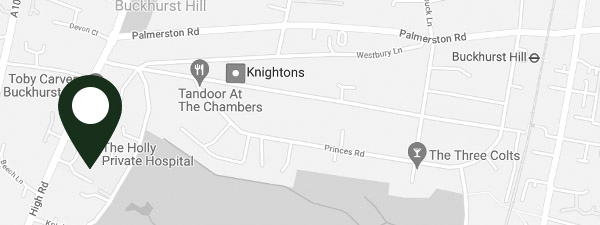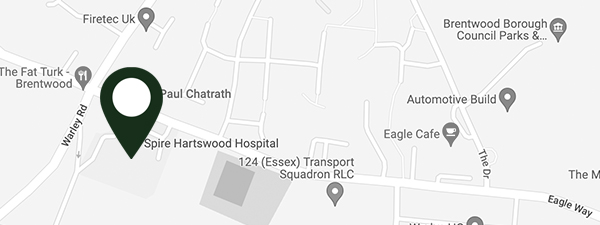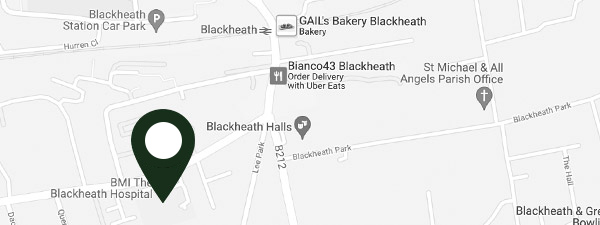Stop keratoconus in its tracks in Hertfordshire, Essex and London
Discover how this cross-linking and intracorneal rings for keratoconus can stabilise your vision and possibly improve your vision
Stop keratoconus in its tracks in Hertfordshire, Essex and London
Discover how this cross-linking and intracorneal rings for keratoconus can stabilise your vision and possibly improve your vision







You don’t have to live with progressive keratoconus
Keratoconus treatment can help you find relief and peace of mind
Treatment Suitability Criteria
Keratoconus often takes several months, possibly years to develop. Suitability for treatment can be determined at your initial appointment.
What’s the aim of treatment?
There are two objectives in keratoconus treatment
- Stop progression, which is accomplished by crosslinking
- Improve vision using various options
Available treatment options
There are a number of treatment options available to improve your condition based on the stage your keratoconus is at.
- Glasses
- Hard contact lens
- Intracorneal rings (in certain cases)
- Laser treatment (in certain cases)
- Cornea transplant, if the options above fail to improve vision
Corneal collagen crosslinking
Crosslinking corneal collagen can be used to treat progressive keratoconus. During this procedure, an eye is primarily treated with a riboflavin solution, which is then activated by ultraviolet light for about 30 minutes. Collagen bonds are formed as a result of the solution, restoring some of the cornea’s strength and shape.
Crosslinking cannot 100% restore the cornea’s function, but it can prevent it from worsening.
To allow riboflavin to penetrate the corneal tissue, it may be necessary to remove the epithelium layer of the cornea.
Within three to twelve months after treatment, clinical trials showed that the corneal bulging could be stopped or reversed by cross-linking. Following this, the US FDA approved the treatment.
Our eye surgeon will explain the risks and benefits at your preoperative assessment.
Crosslinking treatment steps
Step 1: to prevent pain and discomfort, we numb the surface of your eye.
Step 2: The epithelial cells are removed from the central area of the cornea and riboflavin eye drops are applied for half an hour.
Step 3: Once the eye drops have penetrated the cornea, our UV light is focused onto the central part of the cornea for ten minutes
Step 4: Our final step is to bandage the soft contact lens. To regenerate the surface epithelial cell layer, we recommend you wear the contact lens for up to two weeks.
Crosslinking treatment risks
- Cross-linking is generally very safe, but you should allow your eye to heal, and you may experience problems occasionally.
- For example, in about 3% of patients, some level of vision loss will occur following treatment due to haze, infection, or other complications.
- In corneal transplant may be able to reverse this loss of vision in most cases.
A corneal transplant is eventually necessary for at least 20% of all keratoconus patients without CXL treatment.
- Patients with documented disease progression are probably at greater risk of transplantation.
- Cornea oedema
What are the results?
The only treatment currently available to stop keratoconus from worsening is crosslinking.1Cross-linking is currently the only available treatment that appears to stop the worsening of keratoconus.9WebMD. 2021. What Is Corneal Cross-Linking?. [online] Available at: <https://www.webmd.com/eye-health/corneal-cross-linking-for-keratoconus> [Accessed 24 June 2021].
Clinical trials based on outcomes one year after cross-linking show success in the halting of keratoconus in more than 90% of treated eyes, with more than 45% of eyes also gaining an improvement in corneal shape.10 A separate study over five years showed a similar success rate in halting the progress of keratoconus.
Visual improvement after treatment occurs in approximately 50% of cases. However, after treatment, you will still need to wear spectacles or contact lenses.
Crosslinking has been successful in stopping keratoconus in more than 90% of treated eyes one year after treatment, with over 45% of eyes also showing improved corneal shape one year after crosslinking.2Aldo Caporossi, Cosimo Mazzotta, Stefano Baiocchi, Tomaso Caporossi, Rosario Denaro, “Age-Related Long-Term Functional Results after Riboflavin UV A Corneal Cross-Linking”, Journal of Ophthalmology, vol. 2011, Article ID 608041, 6 pages, 2011. https://doi.org/10.1155/2011/608041 Over a five-year study, similarly, high success rates were demonstrated in stopping keratoconus progression.
About 50% of patients see a visual improvement after treatment. That said, if you wear spectacles or contact lenses after treatment, you will still need to wear them.3Christopher Kent, S., 2021. Cross-Linking: Asking the Tough Questions. [online] Reviewofophthalmology.com. Available at: <https://www.reviewofophthalmology.com/article/cross-linking-asking-the-tough-questions#:~:text=so%2C%20for%20whom%3F-,Dr.,some%20flattening%20after%20cross%2Dlinking.> [Accessed 24 June 2021].
Corneal rings
In severe keratoconus, contact lenses may be too uncomfortable. If such a case arises, we recommend corneal rings maybe suitable.
Corneal rings aid in improved vision by flattening the surface of the cornea, through implantable, plastic, c-shaped rings.
They can assist in allowing a better contact lens fit or in certain circumstances can help replace glasses.
Cornea rings implantation usually takes around 15 minutes.
Optometrists cannot guarantee the success of all eye surgeries. But don’t worry; our eye surgeon will explain the risks and benefits in your preoperative assessment.
Corneal rings treatment steps
Step 1: Topical anaesthetic is used to numb the patient’s eye.
Step 2: A speculum is placed into the eye to help keep it open. It also prevents you from blinking, which could interfere with the procedure.
Step 3: We use a femtosecond laser to make small incision and tunnel in the cornea.
Step 4: Corneal rings are then inserted into the created tunnels.
Corneal rings treatment risks
The following adverse events may occur after an Corneal rings procedure:
- Seeing “halos” or glare around lights
- Blurry or fluctuating vision
- Infection
- Problems with night vision
- Extrusion
- Cornea scarring
- Corneal perforation
What are the results?
The degree of keratoconus that each individual suffers from will impact on the results the implants will make.
Patients with moderate keratoconus may require glasses or soft contact lenses for improved vision following surgery. For milder cases, you may not need any lenses for additional vision correction.
Photo-Therapeutic Keratectomy (PTK)
PTK laser surgery is used to treat corneal surface disorders, including keratoconus, and works by using laser to ablate and smoothen corneal irregularity.
PTK treatment steps
Step 1: Using alcohol solution, we remove the first layer of the cornea, the epithelium.
Step 2: We then apply an excimer laser to the eye, to remove a layer. This allows a more sound base for the cornea to heal.
Step 3: We place a bandage contact lens over the eye following the surgery to prevent pain and aid healing. You will begin a course of antibiotics, a steroid regime, and use moisturising, pain-reducing eye drops.
PTK treatment risks
Complications are extremely rare during the procedure. That said, the medication may have short-term and long-term side-effects, including but not limited to:
- Halos and starbursts around lights
- Glare sensitivity
- Infection
- Corneal scarring and Haze
- Corneal oedema
- Dry eyes
- Fluctuating vision
- Excessive thinning of the cornea leading to the need to wear glasses, contact lenses or in rare instances a corneal graft
What are the results?
For over ten years, PTK treatments have been done successfully since the advent of excimer lasers and their therapeutic uses.
Corneal graft
In a corneal graft, a patient’s damaged cornea is replaced by a donor cornea.
Usually, the procedure of corneal grafting takes about an hour to complete and can be done as an outpatient procedure.
It is common for the vision to remain blurry for three to six months following a transplant and medication is required to prevent transplant rejection for 1-2 years.
After corneal grafting surgery, contact lenses or glasses are almost always necessary for the best vision.
Corneal graft treatment steps
The variety of cornea transplant you have will vary depending on how much of the cornea needs replacing, and which part of the cornea is damaged.
Step 1: Based on a few crucial factors, such as your age, health, previous eye damage or disease and if you’d prefer to be asleep or not during the procedure, we will administer either local or general anaesthesia.
Step 2: A lid speculum is used to keep your eyelids open. We then determine the size of the donor tissue needed by measuring the affected corneal area.
Step 3: Using a femtosecond laser, or cutting instrument, we will then remove the section of the damaged cornea ( full or partial).
Step 4: The damaged cornea is then replaced with donor tissue, and secured in place with the use of sutures.
Step 5: Lastly, to keep your eye protected during the healing process, we place a plastic shield over it.
Corneal graft treatment risks
As with all types of surgery, a cornea transplant has some risks and potential complications.
Occasionally, problems appear soon after surgery that requires immediate treatment. In other cases, the problems are detected during follow-up visits.
- Rejection – This happens when your immune system recognises that the cornea was donated and attacks it.
- Failure.
- Retinal detachment – during the process of ageing, the thin layer at the back of your eye called the retina begins to pull away from the vessels supplying it with oxygen and nutrients.
- Astigmatism – where the cornea is misshapen and doesn’t represent a perfectly curved shape.
- Glaucoma – where fluid builds up and pressure builds up as a result.
- Uveitis – when the middle layer of the eye is inflamed.
- Infection – this can happen as a result of surgical wounds.
- Bleeding.
What are the results?
The majority of patients who have a cornea graft get at least part of their vision restored, but each situation is different.
It could take a few weeks or up to a year for your vision to be fully restored. And it’s worth noting that your eyesight might get a little worse before it gets better.
Treatment for keratoconus can be advantageous or disadvantageous, depending on your needs. You can discuss the various options with our specialists.
There are generally minimal side effects related to lenses or corneal crosslinking.
If you need surgery to treat your keratoconus, you will find the benefits will outweigh the risks.
Again, you’ll learn about your options and the risks involved at your appointment with our specialists.
Generally, there are two methods of treating keratoconus: one for improving your vision and one for slowing down the progression of the disease.
Give your eyesight a lift to a new level
Don’t let cataracts, glasses or keratoconus get in the way of your life. Instead, contact us today and discover how you can elevate your vision and life to a new standard.
If you can find your challenge below, then we can elevate your vision to a new standard
Choose the option below that sounds most like you

Your vision is yellowing and hazy
Do you have hazy and cloudy vision (even with glasses)? Do colours appear less vibrant? Are you finding it harder to drive or see at night? If you answered yes to any of these questions, it’s possible that you have a cataract.
Did you know that you can get restored clarity (and the need for glasses?). It’s true, you can have both solutions in one with lifestyle cataract surgery.
You don’t want to live with glasses or contacts
Wish for a life free from glasses or contact lenses? Are they making life inconvenient for you or getting in your way? We appreciate how it feels to have to deal with the constant hassle of visual aids.
Vision correction surgery can help you ditch your specs and discover the freedom you’ve been missing.

You have a troublesome eye condition
Besides decreasing quality of life, eye conditions can cause anxiety. Whatever your particular eye condition, we can help you get an accurate diagnosis and a proven treatment plan.
Let us help you move forward with your life by guiding you towards the right eye treatment for your specific issues.
Trade up your eyes in 3 easy steps
Give your eyes a lift to a whole new level


Get In Touch
The first step to restoring your vision or solving your eye condition is to give our friendly team a call. Get the ball rolling calling on 020 4509 8700 or use our easy online form here.


We’ll Meet Locally
We can see you at one of several convenient locations near you. At your assessment, we’ll listen to your concerns, thoroughly assess your eyes and then recommend the best treatment to solve your visual concern.


Upgrade Your Life
After treatment, patients are often surprised by how much their life changes. Visual improvements often bring a newfound sense of freedom, a restoration of youthful function (like reading again over the age of 45, without glasses!), and a refreshed peace of mind.
Academic resources on Keratoconus Management
Learn more about keratoconus management from authoritative sources
This paper encompasses all things keratoconus treatment and diagnosis, based on your specific symptoms.
In a first-ever collaboration, 4 supranational cornea societies joined forces in a complex, multistep process to develop the Global Consensus on Keratoconus and Ectatic Diseases.
Keratoconus is a progressive eye disease that causes the thinning of the clear front surface of the eye (cornea) and distorts the cornea into a cone-like shape.
★★★★★
Hundreds of happy patients in Hertfordshire, Essex and London
Now they live life with more freedom, comfort and confidence

“Silvana Madi was very professional. She explained everything about the condition of my eyes and how the procedure would go ahead, as well as everything that would happen in the weeks following my procedure. She was very confident in her professional role.”
Loughton

“Ms Madi was excellent with explaining the procedure and being reassuring at all times. Great carer. Her staff explained everything to me clearly and the following morning I had a wonderful clear vision and the colours of everything I saw was amazing.”
London

“Ms Madi was reassuring as I was very nervous. I felt at ease. Ms Madi was reassuring as I was very nervous. I felt at ease.”
Essex

“My surgeon, Miss Silvana Madi, took great care to obtain the optimum result for me which has exceeded my expectations. I was a very nervous patient but Miss Madi and all her staff helped me overcome my anxieties. I couldn’t have asked for more care and attention.”
Essex

“Silvana Madi was very professional. She explained everything about the condition of my eyes and how the procedure would go ahead, as well as everything that would happen in the weeks following my procedure. She was very confident in her professional role.”
Loughton

“Ms Madi was excellent with explaining the procedure and being reassuring at all times. Great carer. Her staff explained everything to me clearly and the following morning I had a wonderful clear vision and the colours of everything I saw was amazing.”
London

“Ms Madi was excellent with explaining the procedure and being reassuring at all times. Great carer. Her staff explained everything to me clearly and the following morning I had a wonderful clear vision and the colours of everything I saw was amazing.”
Essex
We have replaced the images of real patients who provided these testimonials to protect their privacy
Expert cataract, laser eye surgery and cornea specialist in Hertfordshire, Essex and London
Silvana Madi is here to guide you every step of the way

Silvana Madi
MD, PhD, FRCOphth, CERTLRS
Consultant Ophthalmic Surgeon
Silvana Madi is a consultant ophthalmic surgeon specializing in laser eye surgery, corneal disease treatment, and traditional and lifestyle cataract surgery. She has over 10 years of experience in ophthalmology that includes:
- performing combined cataract surgery and glaucoma treatment (MIGS) to reduce glaucoma eye drop dependency.
- an abundance of experience in glaucoma management, including high-risk and complex cases.
- the most up-to-date practices in corneal transplants to improve quality of vision
- all corneal surgeries including intracorneal rings (INTACs) or PTK to help patients with keratoconus reduce dependence on their glasses
- over 15000 procedures to restore vision, remove dependency on glasses and optimise visual health.





